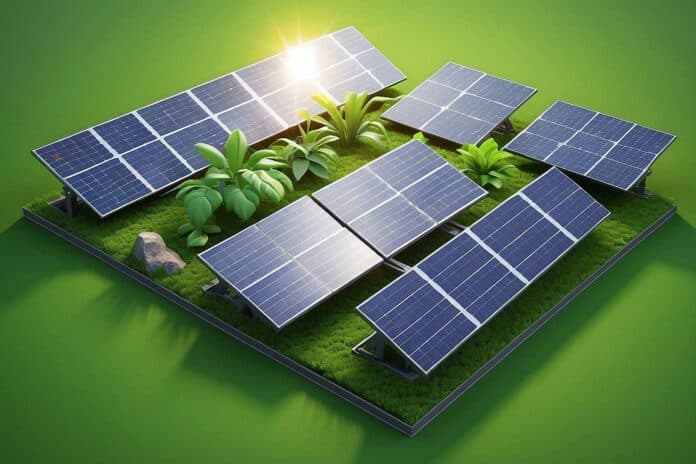According to the International Energy Agency (IEA), solar power generated slightly more than 6% of the world’s electricity in 2022. Solar cell technology is expanding quickly on a global scale. About 22% of sunlight can be converted into electric power by the best solar modules made of crystalline silicon, the most common material used in solar cells. Additionally, modern solar cells are long-lasting and inexpensive.
Solar cell research aims to achieve above 30% efficiency while maintaining affordable production costs.
Although the efficiency of chalcopyrite-based solar cells has reached 23.35%, it has proven difficult to make additional advancements. Uppsala University is the new world record holder for electrical energy generation from CIGS solar cells. With an efficiency of 23.64%, the new world record has been set.
The record results from a collaboration between the company First Solar European Technology Center (formerly known as Evolar) and solar cell researchers at Uppsala University.
According to a recent study, researchers thoroughly examined the solar cell’s composition and electrical performance. They compared their findings to earlier data on the same solar cell from other research facilities.
Two of a solar cell’s most crucial characteristics are its capacity to transfer energy to an electrical load and absorb light. For this to work, the material must take in the maximum amount of solar radiation without wasting it by turning it into heat inside the solar cell.
The glass sheet used in CIGS solar cells is regular window glass covered in many layers, each responsible for a specific function. With the addition of silver and sodium, the substance that absorbs sunlight is composed of copper, indium, gallium, and selenide (thus the name CIGS). This layer is positioned within the solar cell itself, between a transparent front contact and a metallic molybdenum back contact.
The CIGS layer is treated with rubidium fluoride to maximize the solar cell’s electron-separation efficiency. The composition of the CIGS layer and the ratio of the two alkali metals, sodium and rubidium, are crucial for determining the conversion efficiency, or the portion of the whole solar spectrum converted to electric power in the solar cell.
Measurement institutes use filtered light that closely resembles the sun in terms of intensity and spectrum to assess the performance of solar cells. The sun cell is maintained at a specific temperature during the measurement process, and the independent institutes routinely exchange calibration solar cells with one another. An independent measurement is necessary for a record to be officially recognized as a world record. In this instance, the measurement institute Fraunhofer ISE conducted the measurement.
Marika Edoff, Professor of Solar Cell Technology at Uppsala University, who is responsible for the study, said, “Our study demonstrates that CIGS thin-film technology is a competitive alternative as a stand-alone solar cell. The technology also has properties that can function in other contexts, such as the bottom cell of a tandem solar cell.”
Several sophisticated measurement techniques have been employed better to understand the relationship between efficiency and solar cell structure. At the MAX IV facility in Lund, material from the solar cell was characterized using nano-XRF (X-ray fluorescence spectroscopy), which allowed for a thorough compositional analysis. High-resolution transmission electron microscopy (TEM) has been used to examine solar cell cross-sections, including the interfaces between layers, composition as a function of depth, and the structure of the crystal grains.
Using photoluminescence, the spectrum of the light emitted by the solar cell after excitation by a laser has been studied to understand how well the solar cell takes care of electrons internally. A solar cell that shines brightly has a lower share of internal heat losses than a solar cell that glows faintly. Finally, electrical measurement methods have been used to analyze the doping of the CIGS material.
Edoff said, “The fact that we now hold the world record means a lot for both Uppsala University and First Solar European Technology Center. For the CIGS technology, which is known for high reliability, a world record also means that it may offer a viable alternative for new applications, e.g., tandem solar cells. This is important for our research colleagues around the world. We hope that the analyses of the material and electric properties will provide a basis for further improvements in performance.”
Journal Reference:
- Keller, J., Kiselman, K., Donzel-Gargand, O. et al. High-concentration silver alloying and steep back-contact gallium grading enabling copper indium gallium selenide solar cell with 23.6% efficiency. Nat Energy (2024). DOI: 10.1038/s41560-024-01472-3
